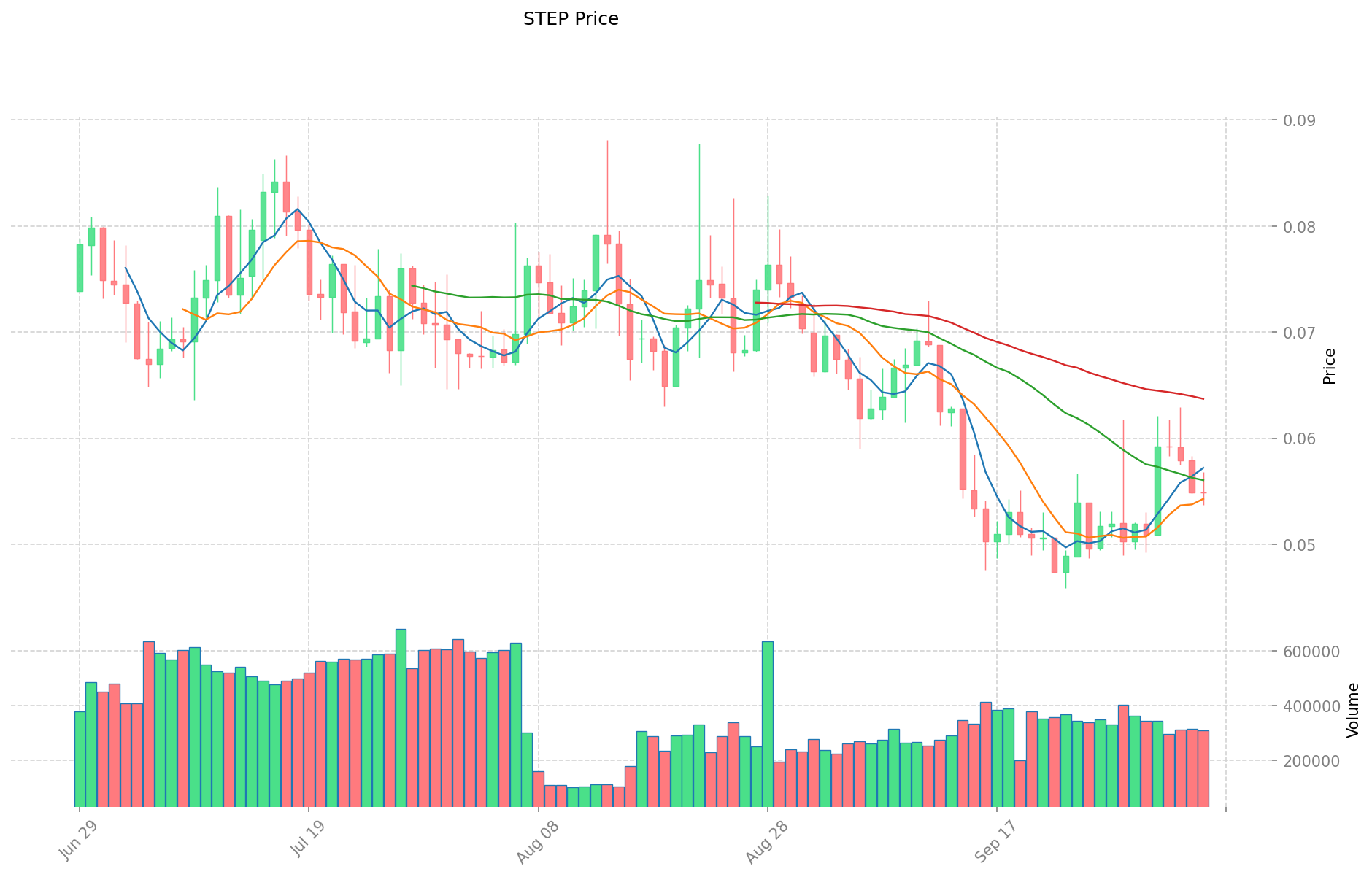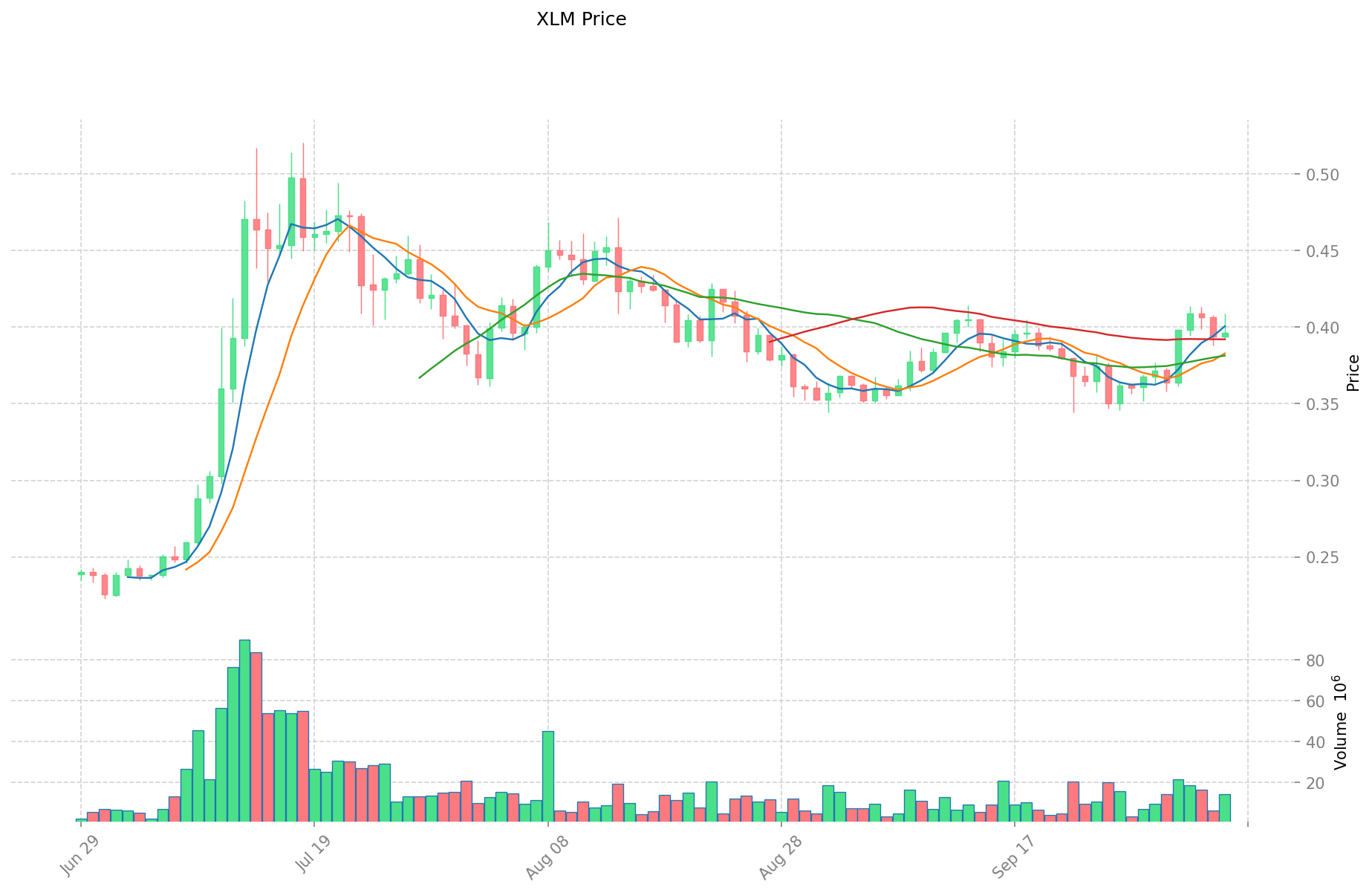STEP vs XLM: Comparing Leading Cross-Border Payment Solutions for Global Businesses
Introduction: STEP vs XLM Investment Comparison
In the cryptocurrency market, the comparison between STEP vs XLM has always been a topic that investors can't avoid. The two not only differ significantly in market cap ranking, application scenarios, and price performance, but also represent different positioning in crypto assets.
Step Finance (STEP): Since its launch in 2021, it has gained market recognition for its portfolio visualization platform in the DeFi space.
Stellar (XLM): Launched in 2014, it has been hailed as a decentralized gateway for transmitting digital and fiat currencies, facilitating fast and low-cost transfers between banks, payment institutions, and individuals.
This article will comprehensively analyze the investment value comparison between STEP vs XLM, focusing on historical price trends, supply mechanisms, institutional adoption, technological ecosystems, and future predictions, attempting to answer the question investors care about most:
"Which is the better buy right now?"
I. Price History Comparison and Current Market Status
STEP and XLM Historical Price Trends
- 2021: STEP reached its all-time high of $10.2 on April 29, 2021.
- 2014: XLM was launched by Jed McCaleb, co-founder of Ripple, as a decentralized protocol for cross-border transactions.
- Comparative analysis: During the 2022 bear market, STEP dropped from its all-time high to a low of $0.00654111, while XLM showed relatively more stability.
Current Market Situation (2025-10-06)
- STEP current price: $0.0549
- XLM current price: $0.39489
- 24-hour trading volume: STEP $17,130.93 vs XLM $5,711,477.24
- Market Sentiment Index (Fear & Greed Index): 74 (Greed)
Click to view real-time prices:
- View STEP current price Market Price
- View XLM current price Market Price


II. Key Factors Affecting STEP vs XLM Investment Value
Market Sentiment and Investor Confidence
- XLM: Price fluctuations are directly influenced by investor sentiment, particularly when positive news about widespread adoption or major technological breakthroughs emerges
- Market News: Short-term price movements are heavily impacted by market news and sentiment shifts
Macroeconomic and Regulatory Factors
- Macroeconomic Trends: Both assets are affected by broader economic conditions
- Regulatory Environment: Policy changes and regulatory developments significantly impact price movements
- Technical Innovation: Continuous technological advancements shape long-term value
Adoption Rate and Partnerships
- XLM: Value is influenced by adoption rate and strategic partnerships
- Long-term Outlook: Both XLM's future trajectory depends on technological progress, regulatory changes, and global economic conditions
Technical and Fundamental Analysis
- Investment Approach: Potential investors should monitor these factors closely while considering both technical and fundamental analysis
- Market Adaptability: Investors should pay attention to price trends and adjust investment strategies based on market changes
III. 2025-2030 Price Prediction: STEP vs XLM
Short-term Prediction (2025)
- STEP: Conservative $0.036234 - $0.0549 | Optimistic $0.0549 - $0.071919
- XLM: Conservative $0.323203 - $0.39415 | Optimistic $0.39415 - $0.496629
Mid-term Prediction (2027)
- STEP may enter a growth phase, with an estimated price range of $0.036463632975 - $0.077743217475
- XLM may enter a growth phase, with an estimated price range of $0.27511709415 - $0.649845549975
- Key drivers: Institutional capital inflow, ETFs, ecosystem development
Long-term Prediction (2030)
- STEP: Base scenario $0.076980620150929 - $0.099304999994699 | Optimistic scenario $0.099304999994699
- XLM: Base scenario $0.613313379543079 - $0.69917725267911 | Optimistic scenario $0.69917725267911
Disclaimer: This analysis is based on historical data and current market conditions. Cryptocurrency markets are highly volatile and unpredictable. Always conduct your own research before making investment decisions.
STEP:
| 年份 | 预测最高价 | 预测平均价格 | 预测最低价 | 涨跌幅 |
|---|---|---|---|---|
| 2025 | 0.071919 | 0.0549 | 0.036234 | 0 |
| 2026 | 0.074189115 | 0.0634095 | 0.053898075 | 15 |
| 2027 | 0.077743217475 | 0.0687993075 | 0.036463632975 | 25 |
| 2028 | 0.076934825611875 | 0.0732712624875 | 0.053488021615875 | 33 |
| 2029 | 0.078858196252171 | 0.075103044049687 | 0.040555643786831 | 36 |
| 2030 | 0.099304999994699 | 0.076980620150929 | 0.073131589143383 | 40 |
XLM:
| 年份 | 预测最高价 | 预测平均价格 | 预测最低价 | 涨跌幅 |
|---|---|---|---|---|
| 2025 | 0.496629 | 0.39415 | 0.323203 | 0 |
| 2026 | 0.503290135 | 0.4453895 | 0.23160254 | 12 |
| 2027 | 0.649845549975 | 0.4743398175 | 0.27511709415 | 20 |
| 2028 | 0.578955464249625 | 0.5620926837375 | 0.466536927502125 | 42 |
| 2029 | 0.656102685092596 | 0.570524073993562 | 0.319493481436395 | 44 |
| 2030 | 0.69917725267911 | 0.613313379543079 | 0.564248309179633 | 55 |
IV. Investment Strategy Comparison: STEP vs XLM
Long-term vs Short-term Investment Strategies
- STEP: Suitable for investors focused on DeFi ecosystem potential
- XLM: Suitable for investors seeking stability and cross-border payment solutions
Risk Management and Asset Allocation
- Conservative investors: STEP: 20% vs XLM: 80%
- Aggressive investors: STEP: 40% vs XLM: 60%
- Hedging tools: Stablecoin allocation, options, cross-currency portfolios
V. Potential Risk Comparison
Market Risk
- STEP: Higher volatility due to smaller market cap
- XLM: Susceptible to broader cryptocurrency market trends
Technical Risk
- STEP: Scalability, network stability
- XLM: Network congestion during high transaction periods
Regulatory Risk
- Global regulatory policies may have different impacts on both assets
VI. Conclusion: Which Is the Better Buy?
📌 Investment Value Summary:
- STEP advantages: Strong potential in DeFi visualization space
- XLM advantages: Established cross-border payment solution, partnerships with financial institutions
✅ Investment Advice:
- New investors: Consider XLM for its relative stability and established use case
- Experienced investors: Balanced portfolio with both STEP and XLM
- Institutional investors: Evaluate XLM for its potential in cross-border payments infrastructure
⚠️ Risk Warning: The cryptocurrency market is highly volatile. This article does not constitute investment advice. None
VII. FAQ
Q1: What are the main differences between STEP and XLM? A: STEP is focused on DeFi portfolio visualization, while XLM is designed for cross-border payments. STEP has a smaller market cap and higher volatility, while XLM is more established with broader adoption in the financial sector.
Q2: Which cryptocurrency has shown better price stability? A: XLM has demonstrated relatively more price stability compared to STEP, especially during market downturns. This is partly due to its larger market cap and more established position in the crypto market.
Q3: What are the key factors affecting the investment value of STEP and XLM? A: Key factors include market sentiment, macroeconomic trends, regulatory environment, adoption rates, partnerships, and technological innovations. For XLM, its adoption in cross-border payments is particularly significant.
Q4: What are the price predictions for STEP and XLM by 2030? A: By 2030, STEP is predicted to reach between $0.076980620150929 and $0.099304999994699, while XLM is expected to be in the range of $0.613313379543079 to $0.69917725267911 in the base scenario.
Q5: How should investors allocate their portfolio between STEP and XLM? A: Conservative investors might consider allocating 20% to STEP and 80% to XLM, while more aggressive investors could opt for a 40% STEP and 60% XLM split. However, individual risk tolerance and investment goals should guide these decisions.
Q6: What are the main risks associated with investing in STEP and XLM? A: Both face market risks tied to cryptocurrency volatility. STEP has higher volatility due to its smaller market cap. Technical risks include scalability for STEP and network congestion for XLM. Both are subject to regulatory risks, which may impact them differently.
Q7: Which cryptocurrency might be more suitable for new investors? A: XLM might be more suitable for new investors due to its relative stability, established use case in cross-border payments, and partnerships with financial institutions. However, all cryptocurrency investments carry significant risks and require careful consideration.
Share
Content